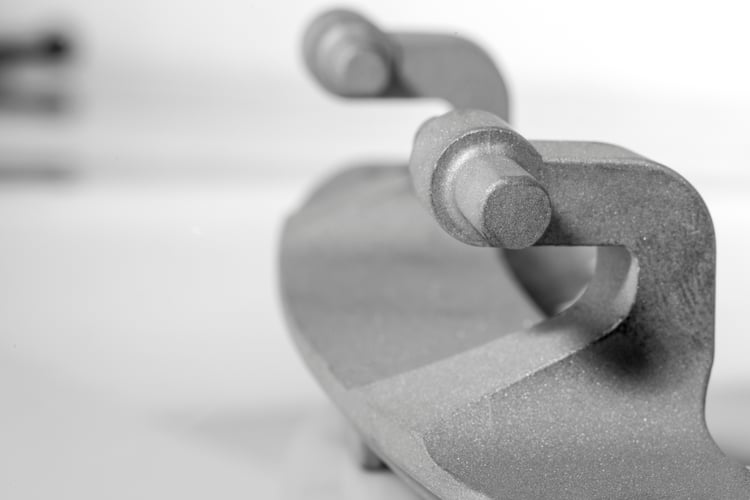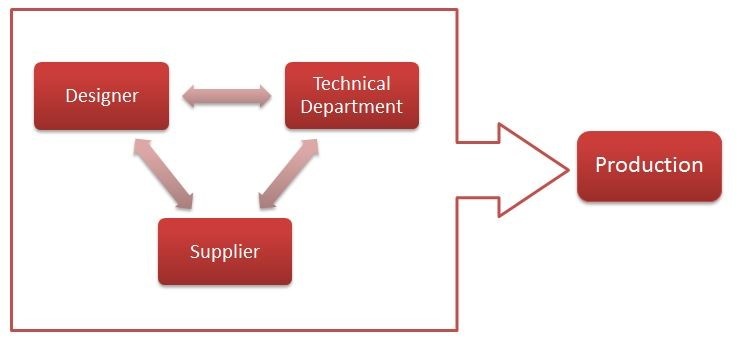As winner of numerous international awards, Bruschi Spa is known for its innovative approach in design and technology. We are glad to share our insights and experiences with the industry members.
Product design for die casting: how to speed up and optimize your DFM
In this article we are going to analyze product design for die casting through the study of a DFM (Design for Manufacturability) and suggesting a way to optimize and speed up the process: co-design.
When talking about product design, what immediately comes to mind is the aesthetical compound, but that’s only a visible part of a much more complex design process. Looks are necessarily bond to the function and the production system of choice, which dictate the rules to which the designer must stick. Design changes through time and in figures in order to meet the aesthetical taste of the time, but it’s also limited by the chosen material and the state of its productive technology.

Since aesthetic taste and objects functionality are intrinsically related to productive systems’ limits, the processing method proves crucial.
By choosing die casting as a processing method, it’s necessary to take in account some essentials, like draft angles, parting lines and critical points. Die casting offers a wide range of benefits, such as replication of the piece. At the same time, issues in the cooling phase may lead to a reduction of some mechanical traits, like resistance, making it necessary to intervene by changing material distribution or by applying strategical ribs.
The process of product design for die casting is inextricably linked to the productive process, therefore a constant connection between the client and the supplier is needed: creating that connection is the purpose of a DFM.
Structure of a DFM
A DFM serves as communication bridge between the client, the designers and supplier’s technicians. The goal of this document is to present the product and its correlation with the production and its replicability through time. It is a study of technical feasibility, which means that the technical department shall evaluate whether the design complies with the available technologies in the factory and the chance of an economical deal.
After the analysis, some modifications can be suggested regarding the productive phase or improved product resistance, provided that they won’t impact the aesthetics or the functionality of the required product. These requests are included in the DMF, that is usually made up of the following topics:
- Critical Areas: it’s the section in which problematic points are highlightened. The may require structural modifications or different treatments;
- Deformation Area: due to the use of die casting, it’s necessary to keep in account the forces applied during demolding;
- Discrepancies in the plans and other clarifications;
- Tolerance;
- Planning of extractors’ position;
The file is then repeatedly transmitted to the qualified offices in order to find an agreement that’ll match both the technical requirements and the aesthetic/functional ones.
The use of die casting imposes a necessary discrimination between structural and aesthetical choices, but the firsts don’t always prevail. An example of this can be found in the marks left by the extraction process: they appear like small and shallow round holes and are usually located on the internal surface or in other non-visible positions. The same goes for injection marks.
In other cases, the technical needs are the determining factors: e.g. draft angles can’t be under 1°, thus a different kind of process must be applied or the models must be changed to achieve them. Reinforcing ribs provide another good example of this: they are used to increase the resistance of the product and to reduce the chance of structural depressions, which would also impact the looks, for example in cusp.
Furthermore, it’s possible to change the original design in order to improve the functionality of the product, by creating a concavity to reduce or optimize the weight balance. Mass reduction can lead not only to a lighter compound, but, thanks to the modifications of the structural geometry, to an increased resistance to mechanical stress.
How to optimize and speed up the process of DFM creation
Technological development has revolutionized the world of design, starting from the design planning phase: if it was once required to have a modeler capable of transporting the idea from the flatness of the paper to the three-dimensionality of a resin model, nowadays the whole process has been simplified by CAD, simulation software and many other programs dedicated to dealing with all the issues related to product design for die casting and mass production. It’s now possible to quickly evaluate the manufacturability of an object, and rapidly consult regarding the necessary modifications and discuss doubts or critical issues emerged from drawing’s study.
So as to optimize and speed up this process, the die caster can offer his clients a co-design service in product creation phase, allowing to make arrangements since the very first steps of the project. This phase comes before the redaction of a DFM and consists of a number of activities that have as a goal to increase the product’s value while reducing the costs, both for the customer side and the production side.
Co-Design is a collaboration between the client and the die caster in a crucial phase of product design. In this phase a constant exchange of information and experiences allows the supplier to highlight the critical points requested by the client, whether they’d be aesthetical, functional or structural, in order to act directly on the design in strictly collaboration with the client.
A weight reduction, no post-production operation needed, direct consulting for the finishing, optimization of the mold, simplification of the components and reduction of assembly costs are just a few of the advantages in a combined productive system including design, die casting, machining and assembly. These benefits are time-saving, resource-saving and allows to reduce costs.
A close collaboration between the client and the die caster through co-design in the initial stages of product design for die casting will lead to an easier and quicker writing and analysis of DFM. A drawing already optimized for production, already adapted to mass production process, will provide the client with a final product in line with the expectations, with fewer risks and fewer wastes.
Below, a schemed comparison between the conventional design process compared to a co-design process.
Co-design Process

Please feel free to fill in the form to know more information about this topic and to be always updated on trends and innovations in Zinc Die Casting Industry, you are welcome to subscribe to our blog.

